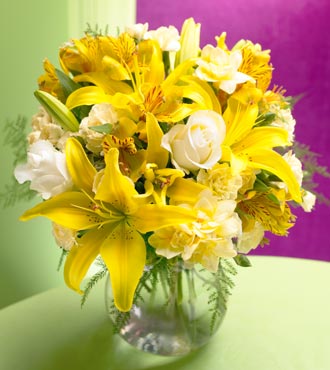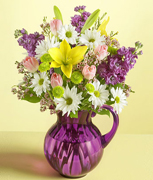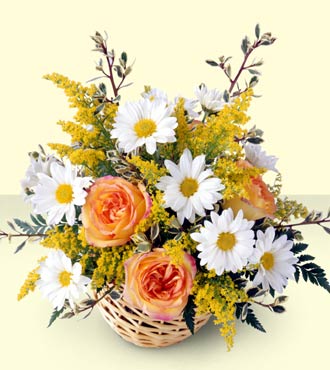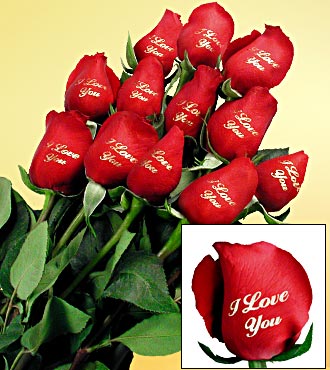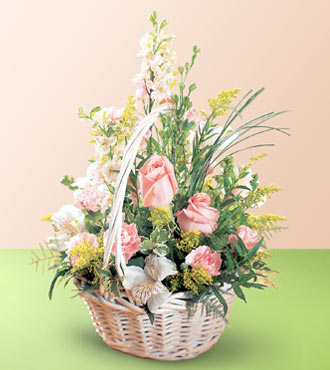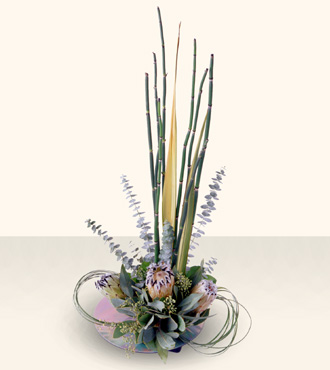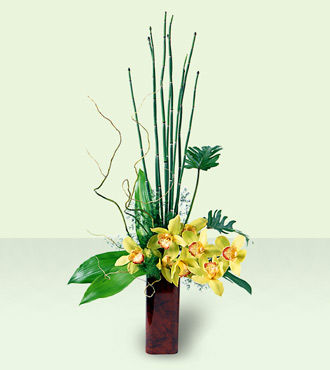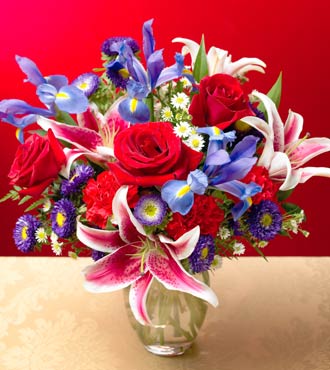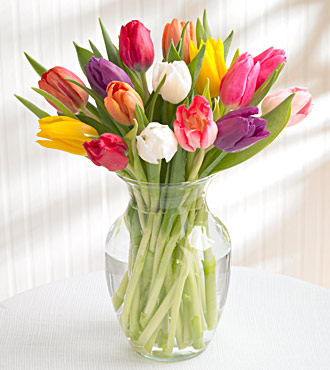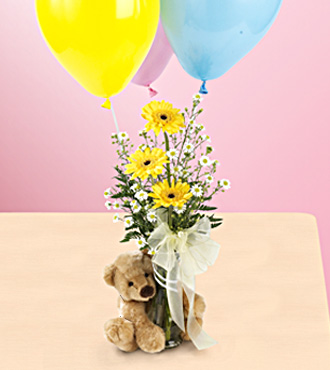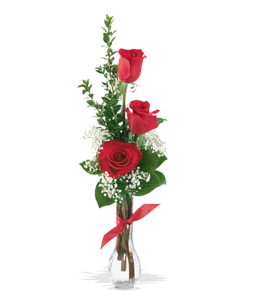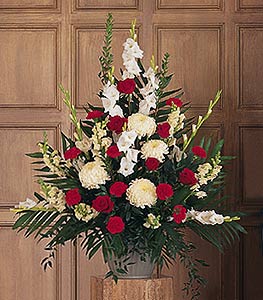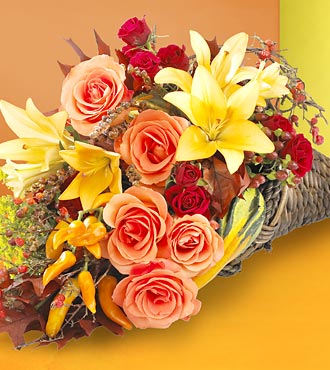|
|||||||||||||
|
Blossom Florist’s Flower Delivery in New Mexico is the greatest. Our New Mexico Flower Shops offer flower delivery in New Mexico with a 100% satisfaction guarantee. Our goal is to send only fresh flowers to New Mexico with our professional and caring staff that is always available to serve your needs.
|
|
New Mexico Click here to Send Flowers to New Mexico Today |
||
|
Albuquerque, NM |
||
|
Our General State History and Information
In this land where water is sacred, history laps against our dry shores like ripples in a mighty river. Pre-historic and historic events--wandering tribes invading from the north, Spanish and Mexicans from the south, other Europeans from the east--are islands in that stream, dividing it into rivulets that reunite farther along.
First came the Folsom Paleo-Indians, who left behind bison bones and fluted projectile points undiscovered until the early 1900s, 9,000 to 10,000 years later. The river valleys west of their hunting grounds later flooded with refugees from the declining Four Corners Anasazi cultures. Sometime between A.D. 1130 and 1180, the Anasazi drifted from their high-walled towns to evolve into today's Pueblo Indians, so named by early Spanish explorers because they lived in land-based communities much like the villages, or pueblos, of home. Culturally similar American Indians, the Mogollón, lived in today's Gila National Forest. On this relatively placid scene from the north burst the Southwest's latest-arriving Indians, the Athapascans, dividing into two related groups: Apache and Navajo. As the tribes sorted out territorial differences through trading and raiding, a new element entered the cultural mix on a previously unknown animal, the horse. The Spanish had arrived--with soldiers and settlers accompanied by priests, the well-known Spanish combination of cross and sword. Although there were several previous attempts at exploring Mexico del Norte's wilderness, the most successful one was engineered by Don Juan de Oñate, who lost a considerable fortune outfitting his entrada. In 1598, his soldiers, oxcarts and livestock arrived at Caypa, one of two Pueblo villages at the confluence of the Río Chama and the Río Grande, north of present-day Española. He soon moved across the river to Yungueingge (Tewa for mockingbird place), a now-ruined pueblo he renamed San Gabriel del Yunque, the first Spanish capital of New Mexico. New Mexico's third governor, Don Pedro de Peralta, founded a new capital, Santa Fe, in 1610. The fortified villa real (royal village) occupied the site of an early Tanoan Indian Pueblo and a more recent Spanish settlement. Things hummed along, with Spanish priests converting Indians, and settlers pouring into the remote colony. But some of the priests became overzealous, and the economic tribute system enslaved the Indians. In 1680, led by Taos Pueblo, they revolted, killing many of the 3,500 settlers strung out from Santa Cruz de la Cañada (near Española) to Socorro and driving the rest south to El Paso del Norte (El Paso). New settlers led by Don Diego de Varg as entered New Mexico in 1692, promising the Indians better times. While the Spanish were gone, Utes, Navajos and Apaches harassed the Pueblos, some of whom now allied themselves with the Spanish. Meanwhile, the once-fierce Apaches, who had learned corn planting and homebuilding from the Pueblos, were driven south by invading Comanches, who terrorized the region until the Treaty of 1786. Both Spanish settlers and Pueblos survived generations of nomadic Indian raids through alliances that included intermarriage--which lends New Mexico its unique mestizaje culture--and through trade fairs, common by the 1790s from Taos to El Paso. One of the fairs' major functions was to ransom Spanish settlers abducted in Indian raids or to buy servants, usually Indians captured by other Indians. These freed Indians, known as genízaros, were Christianized and could, within three generations totally shed the stigma of slavery. They soon became so numerous that the Spanish built them villages at Abiquiú, Santa Fe's Analco neighborhood, San Miguel del Vado, Ojo Caliente and elsewhere. As the buffer between Spanish and Pueblo settlements and the raiding nomads, genízaros and their descendants, mostly stockmen and farmers, led the last great Hispano territorial expansions. They founded such towns as Las Vegas and Anton Chico, spreading as far north as present-day Antonito and Trinidad, Colo., into the Texas and Oklahoma panhandles and west into east-central Arizona. In 1824, New Mexico briefly became a Mexican territory, but in 1846 U.S. Gen. William Kearny's troops followed Anglo merchants down the Santa Fe Trail to occupy New Mexico, which became an American territory. An 1847 revolt by Mexican loyalists precipitated battles at Santa Cruz and massacres at Mora and Taos, but eventually armed resistance ceased… Our Historic Figure Kit Carson 1809-68: Guide, trapper, soldier, Indian agent; born in Madison County, Ky. His father died when he was nine and he received no schooling. He was apprenticed to a saddlemaker (1825) but ran away to join an expedition to Sante Fe, N.M. He became an experienced trapper and Indian fighter and around 1836 married an Arapaho woman he called Alice. After her death, he met John C. Frémont and served as the guide for Frémont's first expedition (1842). He married again (1843) and served as a guide on Frémont's second expedition (1843--44). After Frémont's third expedition and the conquest of California (1846--47), he was selected to carry the reports back to Washington. When the Senate refused to confirm a commission in the regular army, he served as an agent for the Ute Indians (1853--61) and dictated the narrative of his life and adventures. During the Civil War he led the 1st New Mexican Volunteer Infantry, mostly in battles against Native American peoples; his most famous episode involved leading captured Na vahos on a 300-mile "long walk." Breveted to rank of brigadier general, he remained in the army and was assigned to command Ft. Garland in Colorado (1866--67) but his health soon failed.
Mangus Coloradas 1791-1863: Mimbreño Apache war chief; born in the southwest of present-day New Mexico. Repeated offenses against his family and his people caused a turnabout of this one-time friend to the whites. He and his son-in-law, Cochise, were largely successful in keeping whites out of their territory. In 1863, while carrying a flag of truce, he was arrested, tortured, and killed.
Maria Martínez 1884-1981: Potter born in San Idelfonso Pueblo, N.M. Together with husband Julian Martinez, she rediscovered the technique of ancient Pueblo black pottery. After Julian's 1943 death, she continued to produce these traditional wares alone and with her family. Invited to the White House by four presidents, and the recipient of two honorary doctorates, she was asked to lay the cornerstone for Rockefeller Center.
|
||
Birthday |
Valentine's Day |
Christmas |
Mother's Day |
Father's Day |
We specialize in wedding | New Baby and Symphaty / funeral flowers.
Link Page
We specialize in wedding | New Baby and Symphaty / funeral flowers.
Link Page

